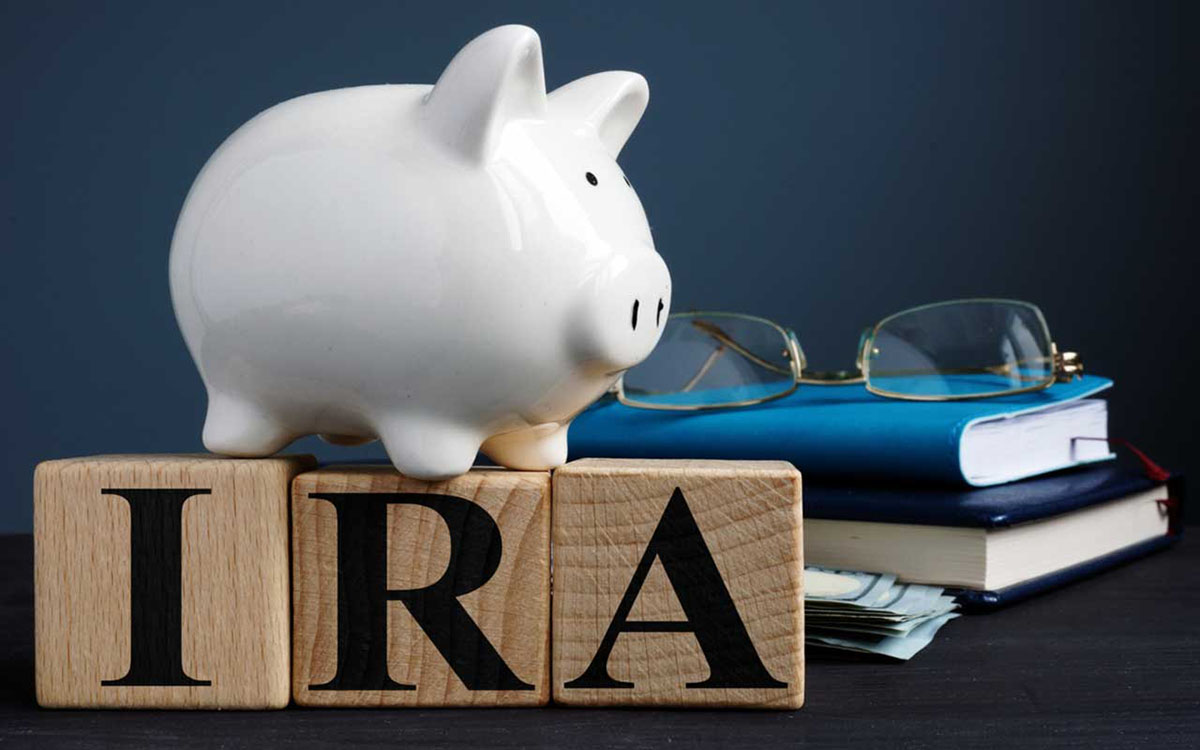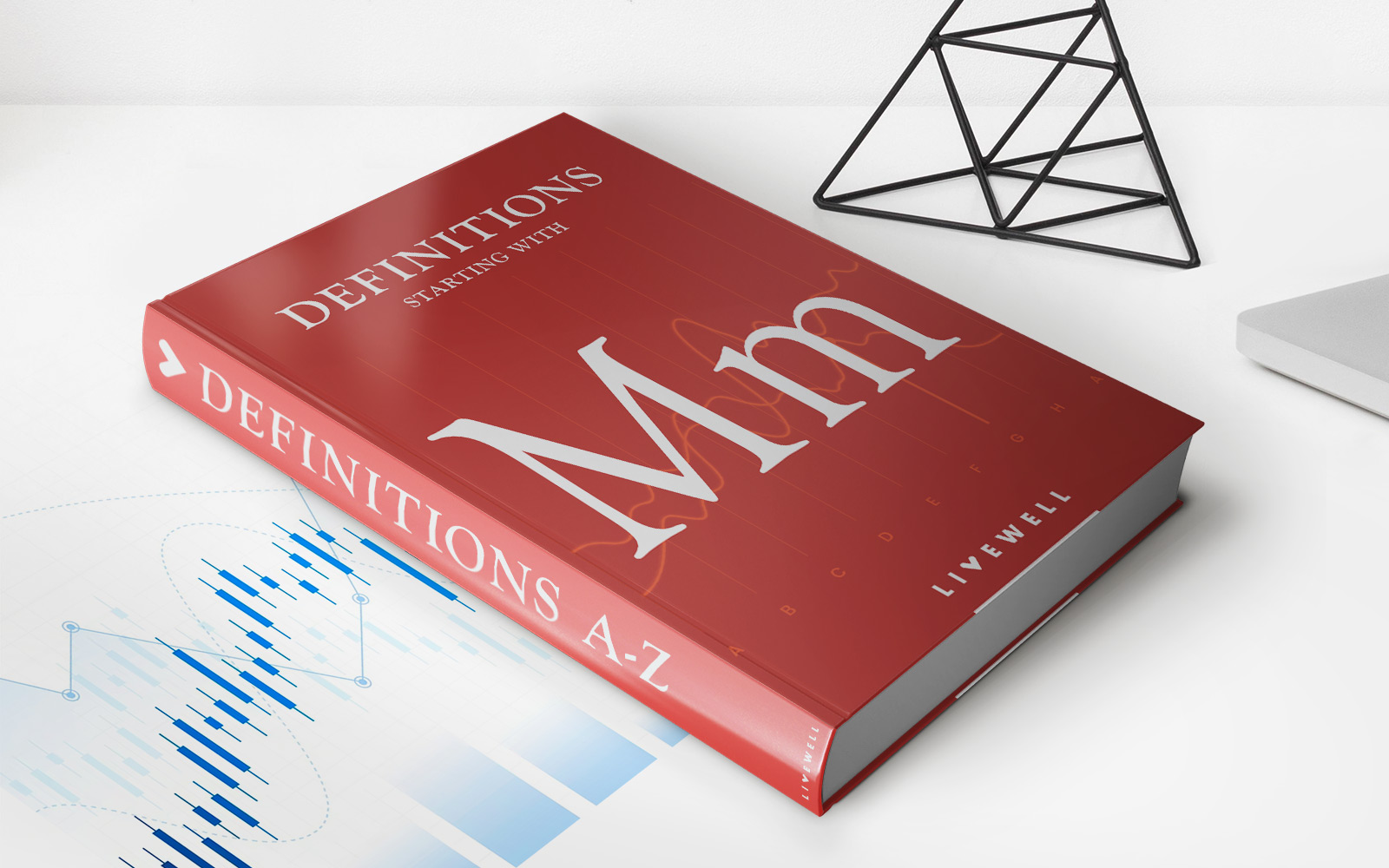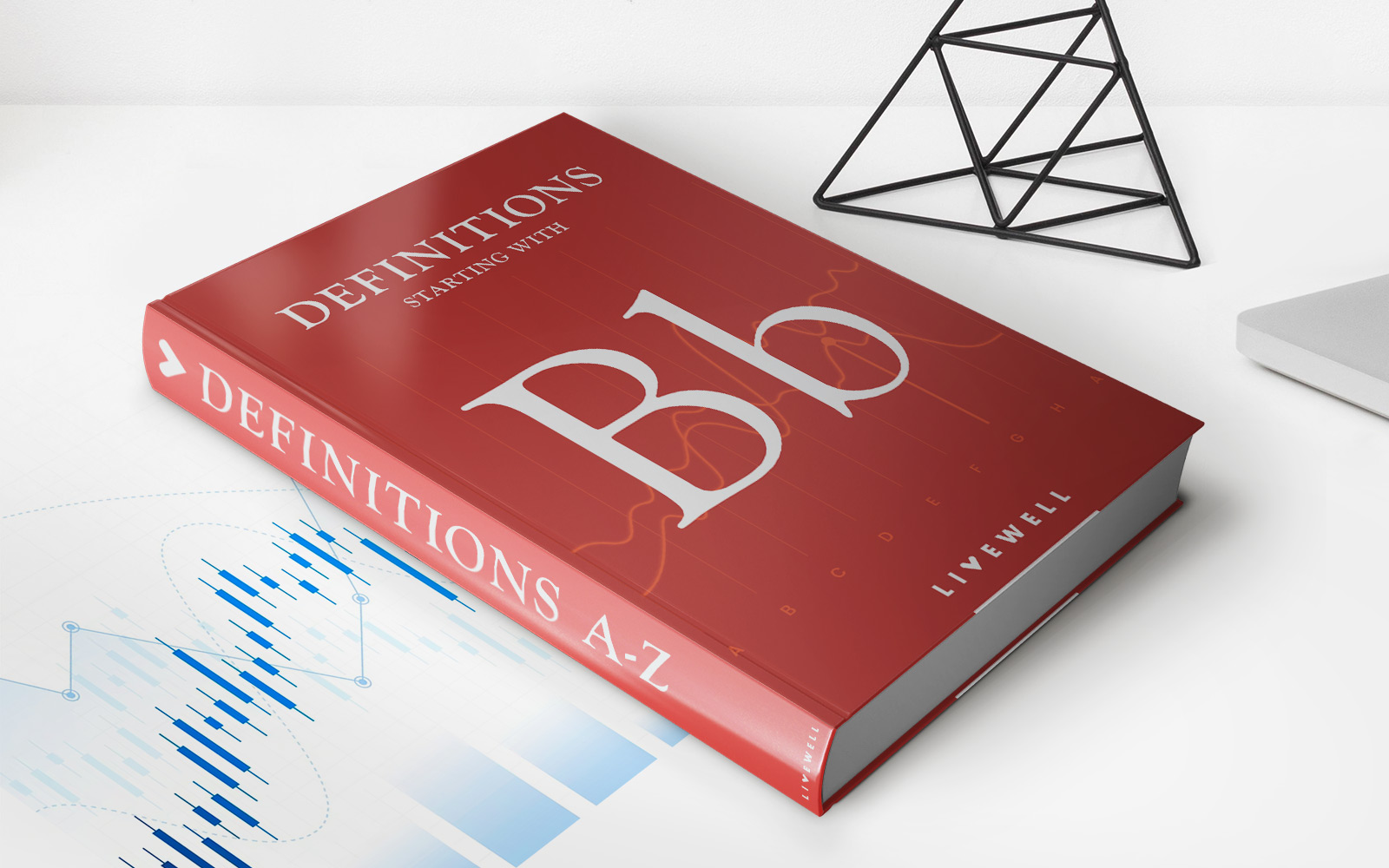

Finance
What Is A Dividend Rate On A Savings Account
Modified: February 21, 2024
Discover the importance of understanding the dividend rate on a savings account and how it affects your finances. Learn more about finance and savings with helpful tips and guidance.
(Many of the links in this article redirect to a specific reviewed product. Your purchase of these products through affiliate links helps to generate commission for LiveWell, at no extra cost. Learn more)
Table of Contents
- Introduction
- Definition of Dividend Rate
- How Dividend Rates on Savings Accounts Work
- Factors Influencing Dividend Rates
- Benefits and Drawbacks of High Dividend Rates
- Comparison of Dividend Rates on Different Savings Accounts
- How to Find the Best Dividend Rate on a Savings Account
- Understanding the Impact of Dividend Rates on Savings Growth
- Conclusion
Introduction
When it comes to saving money and making it work for you, it’s important to understand the various factors that impact your returns. One such factor is the dividend rate on a savings account. It plays a crucial role in determining how much interest you earn on your savings and can significantly impact the growth of your funds over time.
So, what exactly is a dividend rate? In simple terms, it refers to the percentage of interest that financial institutions pay to account holders on their savings. It’s essentially the return you earn on your money for keeping it in a savings account rather than spending it.
Dividend rates are an integral part of the banking industry and can vary from one institution to another. The concept behind dividend rates is to incentivize individuals to deposit their money in savings accounts and provide them with a means to grow their savings over time.
In this article, we will delve deeper into the concept of dividend rates on savings accounts and explore how they work, the factors that influence them, the pros and cons of higher dividend rates, and how to find the best rates for your savings. By gaining a better understanding of dividend rates, you’ll be equipped to make informed decisions about where to save your hard-earned money and maximize your savings potential.
Definition of Dividend Rate
A dividend rate on a savings account refers to the annual percentage rate (APR) at which a financial institution pays interest on the money deposited in the account. It represents the return that account holders can expect to earn on their savings over a given period of time.
Dividend rates are typically expressed as a percentage and can vary depending on the type of savings account, the financial institution offering the account, and market conditions. These rates are often compounded and paid out to account holders on a regular basis, such as monthly, quarterly, or annually.
It’s important to note that dividend rates are different from annual percentage yields (APY), although they are closely related. While dividend rates represent the interest earned on the principal amount, APY takes into account the compounding of interest over time, incorporating any fees or other charges associated with the account. APY provides a more accurate reflection of the overall return on a savings account.
The purpose of a dividend rate is to incentivize individuals to save and reward them for keeping their money in a savings account. It’s a means for financial institutions to attract deposits and provide customers with a way to grow their savings without taking on significant risks.
Dividend rates can vary widely depending on market conditions and the policies of individual financial institutions. While some accounts may offer low dividend rates, others may provide higher rates to attract more customers. It’s essential for individuals to compare different rates and terms to find the best options for their saving goals.
Now that we understand the basic definition of dividend rates on savings accounts, let’s explore how these rates work and the factors that influence them.
How Dividend Rates on Savings Accounts Work
Understanding how dividend rates on savings accounts work is crucial for maximizing the growth of your savings. Essentially, dividend rates determine how much interest you earn on the money you have deposited in a savings account.
Financial institutions calculate dividend rates based on various factors, including the current market conditions, the cost of borrowing money, and their own profitability goals. These rates are often expressed on an annual basis and can be different for different types of savings accounts.
When you open a savings account with a bank or credit union, you agree to keep your money deposited in that account for a specific duration. In return, the financial institution pays you interest in the form of a dividend rate. The longer you keep your money in the account, the more interest you can earn.
Dividend rates can be fixed or variable. Fixed rates remain the same throughout the specified period, providing a predictable return on your savings. Variable rates, on the other hand, can fluctuate based on market conditions and the policies of the financial institution. Variable rates may offer the potential for higher returns but also come with some level of uncertainty.
Dividend rates are typically compounded, which means that the interest you earn is added back to your principal balance. As a result, you can earn interest not only on your original deposit but also on the accumulated interest. Compounding can significantly boost the growth of your savings over time, especially when it occurs more frequently, such as daily or monthly.
It’s important to note that dividend rates are subject to change. Financial institutions may adjust their rates based on market conditions, changes in the economy, or their own interests. Therefore, it’s crucial to stay informed about the current rates and compare different options to ensure you’re getting the best return on your savings.
Now that we have a basic understanding of how dividend rates work, let’s explore the factors that influence these rates and the impact they can have on your savings.
Factors Influencing Dividend Rates
The dividend rates on savings accounts are influenced by a variety of factors that can vary over time and among financial institutions. Understanding these factors can help you make informed decisions when choosing a savings account and maximizing the return on your savings. Here are some key factors that influence dividend rates:
- Market Conditions: The overall condition of the economy and financial markets can have a significant impact on dividend rates. When the economy is strong and interest rates are high, financial institutions may offer higher dividend rates to attract deposits. Conversely, when the economy is in a downturn or interest rates are low, dividend rates may be lower.
- Cost of Funds: Financial institutions need to balance the cost of obtaining funds, such as customer deposits, with the returns they can generate by lending or investing those funds. If a financial institution’s cost of obtaining funds increases, such as through higher interest rates on their own borrowing, it may lead to lower dividend rates to maintain profitability.
- Competition: The competitive landscape among financial institutions can also impact dividend rates. When there is intense competition for deposits, institutions may offer higher rates to attract customers. Conversely, if there is less competition or if an institution has a large customer base, it may offer lower rates.
- Institution’s Profitability: Financial institutions need to generate profits to maintain their operations and provide a return to their shareholders. Therefore, they consider their profitability goals when setting dividend rates. Institutions with higher profitability may be able to offer higher dividend rates as they can afford to allocate more funds towards interest payments.
- Type of Savings Account: The type of savings account you choose can also impact the dividend rate. Different types of accounts, such as regular savings accounts, high-yield savings accounts, or money market accounts, can have varying dividend rates based on their specific features and requirements.
It’s important to remember that financial institutions have the discretion to set their dividend rates within the bounds of market and regulatory conditions. As a result, rates can vary widely between different institutions and change over time.
By considering these factors and regularly comparing rates and offerings from different financial institutions, you can find the savings account that offers the most competitive dividend rate for your financial goals.
Now that we understand the factors influencing dividend rates, let’s explore the advantages and potential drawbacks of higher dividend rates on savings accounts.
Benefits and Drawbacks of High Dividend Rates
Choosing a savings account with a high dividend rate can offer several benefits for your financial goals. However, it’s important to consider the potential drawbacks as well. Let’s explore the advantages and disadvantages of higher dividend rates on savings accounts:
- Increased Earnings: One of the significant advantages of a high dividend rate is the potential for increased earnings on your savings. With a higher rate, you can earn more interest over time, allowing your savings to grow at a faster pace.
- Faster Goal Achievement: If you have specific savings goals, such as buying a house or funding a dream vacation, a high dividend rate can help you reach those goals more quickly. The compounded growth from a higher rate can accelerate your savings progress.
- Outpacing Inflation: Inflation erodes the purchasing power of your money over time. By choosing a savings account with a high dividend rate, you have a better chance of outpacing inflation and preserving the value of your savings.
- Increased Competition: Financial institutions offering high dividend rates often face stiff competition for deposits. This can result in additional benefits for account holders, such as better customer service, enhanced account features, or loyalty rewards.
- Potential for Volatility: While high dividend rates can be lucrative, they often come with a higher level of risk. Financial institutions offering exceptionally high rates may have unstable financials or may impose stricter requirements or fees on the account. It’s important to carefully assess the institution’s credibility and the terms and conditions associated with the account.
- Temporary Promotions: Some financial institutions may offer limited-time promotions with high dividend rates as a marketing strategy to attract new customers. While these promotions can be enticing, it’s essential to understand if the higher dividend rate will be sustainable in the long term or if it will revert to a lower rate after the promotional period ends.
To make an informed decision, evaluate your financial goals, risk tolerance, and the stability of the financial institution. Consider a balance between a competitive dividend rate and other account features, such as accessibility, account fees, and customer service.
Remember that while high dividend rates can be advantageous, the most important aspect is the overall suitability of the account for your specific financial needs. Compare multiple options and consider seeking advice from financial professionals to ensure you’re making the best choice for your savings goals.
Now that we’ve explored the benefits and drawbacks of high dividend rates, let’s move on to comparing dividend rates on different types of savings accounts.
Comparison of Dividend Rates on Different Savings Accounts
When it comes to choosing a savings account, it’s important to compare dividend rates offered by different types of accounts. Each type of savings account comes with its own features, benefits, and dividend rates. Let’s explore some common types of savings accounts and how their dividend rates compare:
- Regular Savings Accounts: Regular savings accounts typically offer lower dividend rates compared to other types of accounts. However, they often have lower minimum balance requirements and are more accessible for everyday banking needs.
- High-Yield Savings Accounts: High-yield savings accounts are designed to offer higher dividend rates in exchange for meeting certain requirements, such as higher minimum balances or limited withdrawals. These accounts can provide a better return on your savings compared to regular savings accounts.
- Money Market Accounts: Money market accounts often offer competitive dividend rates and provide additional features like check-writing capabilities. These accounts generally require higher initial deposits and may have higher minimum balance requirements to earn the stated dividend rate.
- Certificate of Deposit (CD) Accounts: CDs are time deposits that offer fixed dividend rates for a specified term, such as 6 months or 1 year. CD accounts tend to offer higher dividend rates compared to regular savings accounts or high-yield savings accounts. However, you must commit to keeping your funds locked in the account for the duration of the term.
It’s essential to consider your financial goals, liquidity needs, and risk tolerance when comparing dividend rates on different savings accounts. High-yield savings accounts and money market accounts may offer higher rates but come with stricter requirements. CD accounts provide higher rates but restrict access to your funds for a set period. Regular savings accounts provide more flexibility but lower dividend rates.
Additionally, it’s crucial to compare dividend rates from multiple financial institutions to find the most competitive options. Online banks and credit unions may offer higher dividend rates compared to traditional brick-and-mortar banks due to lower overhead costs.
Remember to consider other factors beyond dividend rates when comparing savings accounts. Evaluate the fees, minimum balance requirements, customer service, and additional account features to ensure the account aligns with your overall financial needs.
Now that we’ve compared dividend rates on different savings accounts, let’s discuss how to find the best dividend rate for your savings.
How to Find the Best Dividend Rate on a Savings Account
When searching for the best dividend rate on a savings account, it’s important to consider multiple factors beyond just the rate itself. Here are some steps you can take to find the account with the most competitive dividend rate for your savings:
- Research Financial Institutions: Start by researching different financial institutions, including banks and credit unions, both traditional and online. Look for institutions with solid reputations and favorable reviews.
- Compare Dividend Rates: Once you have a list of potential institutions, compare their dividend rates on different types of savings accounts. This can be done through their websites, customer service representatives, or online comparison tools.
- Consider the Account Type: Remember to consider the type of savings account that best aligns with your needs. Assess the features, requirements, and potential fees associated with each account type, in addition to the dividend rate.
- Review Minimum Balance Requirements: Pay attention to the minimum balance requirements to earn the advertised dividend rate. Ensure that you can comfortably maintain the required balance without incurring any penalties or fees.
- Check for Additional Fees: Read the account disclosure documents carefully to understand any fees associated with the account, such as monthly maintenance fees, transaction fees, or fees for falling below the minimum balance.
- Consider Account Accessibility: Evaluate how easily you can access your funds. Some accounts may offer limited withdrawals or have restrictions on transfers, while others provide more flexibility.
- Assess Customer Service: Research the quality of customer service provided by the financial institution. Look for positive reviews and consider factors such as online banking capabilities, mobile apps, and ease of contacting customer support.
- Read Account Reviews: Seek out reviews and feedback from other account holders. Their experiences can offer insights into the institution’s reliability, convenience, and customer satisfaction.
- Consider Promotions: Keep an eye out for promotional offers that provide higher dividend rates for a limited period. While these promotions can be attractive, ensure that the account’s long-term features align with your needs once the promotional period ends.
- Consult with Financial Professionals: If you’re unsure about the best savings account for your needs, consider consulting with financial professionals who can provide personalized advice based on your financial goals and circumstances.
By conducting thorough research, comparing rates and features, and carefully considering your needs, you can find a savings account with a competitive dividend rate that aligns with your financial goals.
Now that we’ve explored how to find the best dividend rate, let’s understand the impact of dividend rates on the growth of your savings.
Understanding the Impact of Dividend Rates on Savings Growth
The dividend rate on a savings account plays a crucial role in determining the growth of your savings over time. Even small differences in dividend rates can have a significant impact on the total amount of interest you earn. Understanding this impact is key to maximizing the growth of your savings. Here are some key points to consider:
Higher dividend rates allow your savings to grow at a faster pace. When you deposit money into a savings account with a higher rate, you earn more interest over a given period. The effect of compounding, where the interest is reinvested and added to your principal, further boosts the growth of your savings.
For example, let’s say you have two savings accounts:
- Account A offers a dividend rate of 1%.
- Account B offers a dividend rate of 2%.
If you deposit $10,000 in each account and leave it untouched for one year, Account A would earn $100 in interest, while Account B would earn $200. Over time, this difference in interest earnings can accumulate significantly.
Additionally, the impact of compounding becomes more prominent with higher dividend rates. Dividend rates that compound more frequently, such as daily or monthly, can generate higher returns compared to rates that compound annually.
It’s worth noting that while higher dividend rates lead to faster savings growth, they often come with trade-offs. Some savings accounts with higher rates might have stricter requirements, such as higher minimum balances or limited access to funds. It’s important to find the right balance between a competitive dividend rate and the account features that meet your needs.
To visualize the impact of different dividend rates, consider using savings calculators or financial tools that allow you to input your initial deposit, dividend rate, and time horizon. These tools can provide a projected growth trajectory for your savings, helping you make more informed decisions.
By understanding the impact of dividend rates on savings growth, you can prioritize finding an account that offers competitive rates. Regularly monitoring and reassessing your savings accounts to ensure you are earning the best return possible is essential for long-term financial success.
Now, let’s conclude our exploration of dividend rates on savings accounts.
Conclusion
Choosing a savings account with a competitive dividend rate is essential for maximizing the growth of your savings over time. By understanding the concept of dividend rates and how they work, you can make informed decisions and take advantage of the best opportunities for your financial goals.
In this article, we explored the definition of dividend rates on savings accounts and how they determine the interest you earn on your deposits. We discussed the factors influencing dividend rates, such as market conditions, competition, and profitability goals of financial institutions.
We also analyzed the benefits and drawbacks of higher dividend rates, understanding the potential for increased earnings and faster goal achievement, as well as the risks associated with volatility and temporary promotions.
Comparing dividend rates on different types of savings accounts allowed us to highlight the differences between regular savings accounts, high-yield savings accounts, money market accounts, and certificate of deposit accounts. Each account type comes with its own features and requirements that impact the dividend rate offered.
To find the best dividend rate on a savings account, we discussed the importance of researching financial institutions, comparing rates, assessing minimum balance requirements and fees, and considering account accessibility and customer service. Seeking professional advice when necessary can also provide valuable insights.
Finally, we emphasized the impact of dividend rates on the growth of your savings, highlighting the significance of higher rates and the effect of compounding over time. Understanding this impact allows you to make better-informed decisions and optimize your savings growth potential.
Remember, finding the best dividend rate is just one aspect of a successful savings strategy. It’s equally important to assess the overall suitability of the account for your needs, including account features, fees, and customer service.
Now armed with this knowledge, you can confidently navigate the world of savings accounts, find the account that best aligns with your financial goals, and make your money work harder for you.














